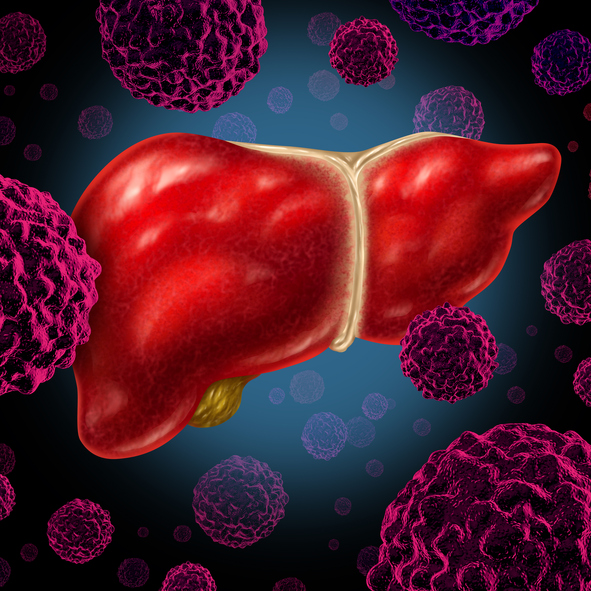
Hepatocellular carcinoma (HCC) is the most common type of primary liver cancer and occurs most often in people with chronic liver diseases, such as cirrhosis caused by hepatitis B or hepatitis C infection. According to the American Cancer Society, the five-year survival rate for patients with localized liver cancer is 33%. This survival rate is reduced if the cancer has spread to the lymph nodes or nearby structures, and even further reduced if the cancer has spread to distant structures, such as the lungs or the bones. Now, a new study may give hope for developing therapies against HCC.
Researchers from the University of Michigan (U-M) Life Sciences Institute report they have discovered a hormone secreted by fat cells can restrain the growth of liver tumors in mice.
The findings are published in the journal Cell Metabolism in a paper titled, “Neuregulin 4 suppresses NASH-HCC development by restraining tumor-prone liver microenvironment.”
“The mammalian liver comprises heterogeneous cell types within its tissue microenvironment that undergo pathophysiological reprogramming in disease states, such as non-alcoholic steatohepatitis (NASH),” wrote the researchers. “Patients with NASH are at an increased risk for the development of HCC. However, the molecular and cellular nature of liver microenvironment remodeling that links NASH to liver carcinogenesis remains obscure.”
Jiandie Lin, PhD, the Bradley M. Patten collegiate professor in the life sciences, and professor of cell and developmental biology at U-M Medical School, and his team studied how molecular and cellular changes are affected by nonalcoholic fatty liver disease in mice.
Using single-cell RNA sequencing, a technology for probing gene expression of individual cells within complex tissues, Lin and his team previously constructed a liver cell atlas and a blueprint of intercellular signaling in healthy and NASH mouse livers.
The researchers sought to determine molecular changes in the NASH state that disrupt balance and interactions of these cell types, as potential therapeutic targets to reverse the progression from NASH to cancer.
“Liver cancer in NASH patients is different from cancers caused by viral hepatitis, in that it often develops in the absence of liver cirrhosis,” explained Lin. “We suspect that different disease mechanisms may be engaged in NASH-related liver cancer.”
The team observed changes in two types of immune cells in particular that appear to contribute to the development of HCC. In mouse livers with NASH, T cells showed hallmarks of functional impairments. At the same time, macrophages acquired molecular features typically associated with cancers.
“These changes we saw in macrophages and T cells resemble the tumor microenvironment, but they are happening even before any cancer becomes apparent,” said Lin. “It gives us a hint that maybe these changes in the liver microenvironment could provide fertile ground for liver cancer cells to appear and grow. It almost looks like the liver, once it develops NASH, is already preparing for cancer cells to thrive.”
The team identified a hormone that serves as a checkpoint for disease progression, and it appears to have potential as a treatment: neuregulin 4, or NRG4.
The team previously revealed that NRG4 can protect mouse livers against NASH, and that a decrease or loss of this hormone leads to more severe levels of liver disease. Now, the team has found that the hormone can suppress hepatocellular carcinoma in NASH mice.
Their study demonstrates that mice lacking the hormone NRG4 develop more severe NASH and more liver tumors than mice with normal levels of NRG4.
“A lot of studies on liver cancer focus on the cancerous liver cells themselves: how they proliferate and how they evade the immune system,” Lin said. “But our findings break out of this liver-centered framework, showing a fat-derived hormone could actually reprogram the liver environment and have a very big impact on liver cancer development.”
Further research is needed before NRG4 can be pursued as a therapeutic for hepatocellular carcinoma. Looking toward the future, the researchers plan to investigate approaches for improving the hormone’s effectiveness and to better understand the nature underlying its regulation of macrophages and T cells in the liver.













